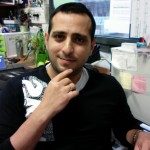Link to Pubmed [PMID] – 31931885
Link to HAL – hal-02870586
Link to DOI – 10.1186/s13071-019-3868-y
Parasit Vectors 2020 Jan; 13(1): 18
The recent reference genome assembly and annotation of the Asian malaria vector Anopheles stephensi detected only one gene encoding the leucine-rich repeat immune factor APL1, while in the Anopheles gambiae and sibling Anopheles coluzzii, APL1 factors are encoded by a family of three paralogs. The phylogeny and biological function of the unique APL1 gene in An. stephensi have not yet been specifically examined.The APL1 locus was manually annotated to confirm the computationally predicted single APL1 gene in An. stephensi. APL1 evolution within Anopheles was explored by phylogenomic analysis. The single or paralogous APL1 genes were silenced in An. stephensi and An. coluzzii, respectively, followed by mosquito survival analysis, experimental infection with Plasmodium and expression analysis.APL1 is present as a single ancestral gene in most Anopheles including An. stephensi but has expanded to three paralogs in an African lineage that includes only the Anopheles gambiae species complex and Anopheles christyi. Silencing of the unique APL1 copy in An. stephensi results in significant mosquito mortality. Elevated mortality of APL1-depleted An. stephensi is rescued by antibiotic treatment, suggesting that pathology due to bacteria is the cause of mortality, and indicating that the unique APL1 gene is essential for host survival. Successful Plasmodium development in An. stephensi depends upon APL1 activity for protection from high host mortality due to bacteria. In contrast, silencing of all three APL1 paralogs in An. coluzzii does not result in elevated mortality, either with or without Plasmodium infection. Expression of the single An. stephensi APL1 gene is regulated by both the Imd and Toll immune pathways, while the two signaling pathways regulate different APL1 paralogs in the expanded APL1 locus.APL1 underwent loss and gain of functions concomitant with expansion from a single ancestral gene to three paralogs in one lineage of African Anopheles. We infer that activity of the unique APL1 gene promotes longevity in An. stephensi by conferring protection from or tolerance to an effect of bacterial pathology. The evolution of an expanded APL1 gene family could be a factor contributing to the exceptional levels of malaria transmission mediated by human-feeding members of the An. gambiae species complex in Africa.

